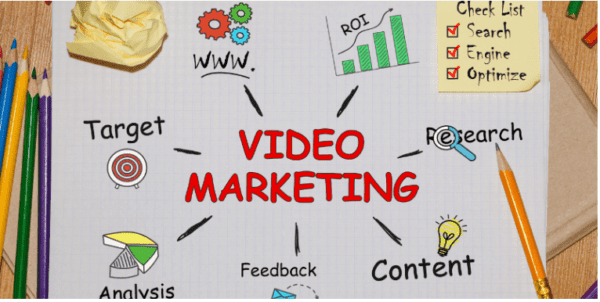Are you a nonprofit organization struggling to increase awareness and engagement for your cause? Nonprofit video marketing may be the solution you’re looking for. With the rise of social media and online video platforms, video content has become essential for organizations to connect with their audience and promote their mission.
Nonprofit video marketing involves creating compelling content that resonates with your target audience and promotes your cause. The goal is to create an emotional connection with your audience and inspire them to act, whether donating, volunteering, or spreading the word about your organization. By leveraging the power of visual storytelling, you can effectively communicate your message and increase your impact.
In this article, we’ll explore the benefits of nonprofit video marketing and provide tips and best practices for creating effective video content. Whether you’re just starting or looking to improve your current video strategy, this guide will help you harness video’s power to increase your organization’s awareness and engagement.

Understanding Nonprofit Video Marketing
Nonprofit video marketing is a powerful tool that can help organizations achieve their mission and goals. By creating engaging and impactful video content, nonprofits can effectively communicate their purpose and connect with their audience.
The Power of Video Content
Video content has become increasingly popular in recent years, with social media algorithms prioritizing video content over other forms of content. This is because videos are more engaging and can effectively convey a message than static images or text.
For nonprofits, video content can be a powerful way to tell their story and connect with their audience. Videos can help nonprofits showcase their impact, share their mission, and inspire action.
Critical Components of a Successful Video Marketing Strategy
To create a successful video marketing strategy, nonprofits should consider the following key components:
- Audience: Nonprofits should identify their target audience and create video content that resonates with them.
- Impact: Videos should showcase the nonprofit’s impact on the world and how donors can help.
- Mission: Videos should communicate the nonprofit’s mission and values to inspire support and engagement.
- Goals: Nonprofits should set clear goals for their video marketing strategy, such as increasing donations or raising awareness.
- Purpose: Videos should have a clear purpose and call to action to encourage viewers to take action.

By considering these key components, nonprofits can create a video marketing strategy that effectively communicates their message and achieves their goals.
Related Posts:
Creating Compelling Video Content
Creating compelling video content is essential to any nonprofit’s marketing strategy. Video marketing is one of the most effective ways to engage with your audience and convey your message. Here are some tips for creating compelling video content to inspire and engage your audience.
Storytelling and Authenticity
Storytelling is a powerful tool for nonprofits. It allows you to connect with your audience emotionally and convey your message in a memorable and impactful way. When creating video content, focus on telling an authentic and relatable story. Use real people and stories to connect with your audience and inspire action.
Budget-Friendly Video Production
You don’t need a big budget to create great video content. With the right equipment and creativity, you can create compelling video content that engages your audience and inspires action. Use your smartphone camera or a low-cost camera to capture footage. Use free or low-cost video editing software to edit your footage and add music and graphics.
Incorporating Testimonials and Success Stories
Related Posts:
Maximizing Impact and Engagement
Video marketing is a powerful tool for nonprofits to engage with their audience and increase their impact. Your nonprofit can maximize its impact and engagement by leveraging social media platforms, optimizing videos for different channels, and including strong calls to action.
Leveraging Social Media Platforms
Social media platforms such as YouTube, Vimeo, Instagram Reels, and TikTok are great places to share your nonprofit videos. It’s essential to understand which platforms your target audience is using and tailor your content accordingly. For example, if your target audience is mainly on Instagram, creating shorter, more visually engaging videos for Instagram Reels may be more effective.

Optimizing Video for Different Channels
When creating videos for different channels, optimizing them for each platform is essential. This can include adjusting the aspect ratio, adding subtitles, and including captions. By optimizing your videos, you can increase their visibility and engagement.
Calls-to-Action and Conversion
Including solid calls-to-action (CTAs) in your nonprofit videos can help increase engagement and conversion rates. CTAs can encourage viewers to take action, such as donating, volunteering, or sharing your video. Including clear and concise CTAs relevant to the video’s content is essential.
In addition to CTAs, tracking your video’s performance and conversion rates is essential. By monitoring your video’s click-through rate (CTR) and conversion rate, you can identify areas for improvement and optimize your videos for better engagement and impact.
Your nonprofit can maximize its impact and engagement through video marketing by leveraging social media platforms, optimizing videos for different channels, and including solid CTAs.
Promoting Your Video Content
After creating your nonprofit video, promoting it to maximize its reach and impact is essential. Here are some strategies for increasing views and traffic to your video content:
Strategies for Increasing Views and Traffic
- Social Media Marketing: Social media platforms like Facebook, Twitter, and Instagram are great places to promote your video content. Share your video on your organization’s social media pages and encourage your followers to share it with friends. Use relevant hashtags to increase visibility and reach.
- Email Campaign: Email your organization’s email list with a link to your video. Personalize the email and make it engaging to encourage recipients to watch and share the video.
- Paid Advertising: Consider using paid advertising on social media platforms or Google AdWords to increase the visibility and reach of your video content.
- Optimize for Search Engines: Use relevant keywords and tags in your video title, description, and tags to optimize it for search engines. This will help your video appear higher in search results and increase views and traffic.

Collaborating with Influencers and Partners
Collaborating with influencers and partners can help increase the reach and impact of your nonprofit video. Here are some ways to collaborate:
- Influencer Marketing: Identify influencers in your community or industry who align with your organization’s mission and values. Contact them and ask if they would share your video on their social media pages or website.
- Partner with Other Nonprofits: Partner with nonprofits sharing your organization’s mission and values. Collaborate on a video campaign and share each other’s videos on social media and email lists.
Promoting your nonprofit video content and collaborating with influencers and partners can increase its reach and impact and inspire your community to take action.
Measuring Success and Analyzing Metrics
As with any marketing strategy, measuring the success of your nonprofit video marketing campaign is crucial. By analyzing metrics, you can determine what is working and what is not and adjust your strategy accordingly to maximize engagement and conversions.
Understanding Video Analytics
Video analytics provide valuable insights into how your audience interacts with your content. Metrics such as view count, watch time, engagement rate, and conversion rates can help you assess the effectiveness of your videos.
View count and watch time are basic metrics that indicate how many people are watching your videos and for how long. Engagement rate measures how many viewers interact with your content, such as liking, commenting, or sharing your videos. Conversion rates track how many viewers are taking action, such as donating or signing up for your newsletter.
Tracking these metrics allows you to identify which videos resonate with your audience and adjust your strategy accordingly. For example, if you notice that viewers are dropping off after the first 30 seconds of your video, you may need to change your intro to be more engaging.

Adjusting Your Strategy Based on Feedback
Feedback from your audience is another valuable source of information for improving your nonprofit video marketing strategy. By soliciting feedback through surveys, comments, and social media, you can gain insights into what your audience likes and dislikes about your videos.
You can also use customer relationship management (CRM) software to track viewer behaviour and preferences, such as which videos they watch and how long they watch. This information can help you create more personalized, targeted video content that resonates with your audience.
In conclusion, measuring the success of your nonprofit video marketing campaign is crucial for optimizing engagement and conversions. By understanding video analytics and adjusting your strategy based on feedback, you can create more effective and impactful videos that drive results.




